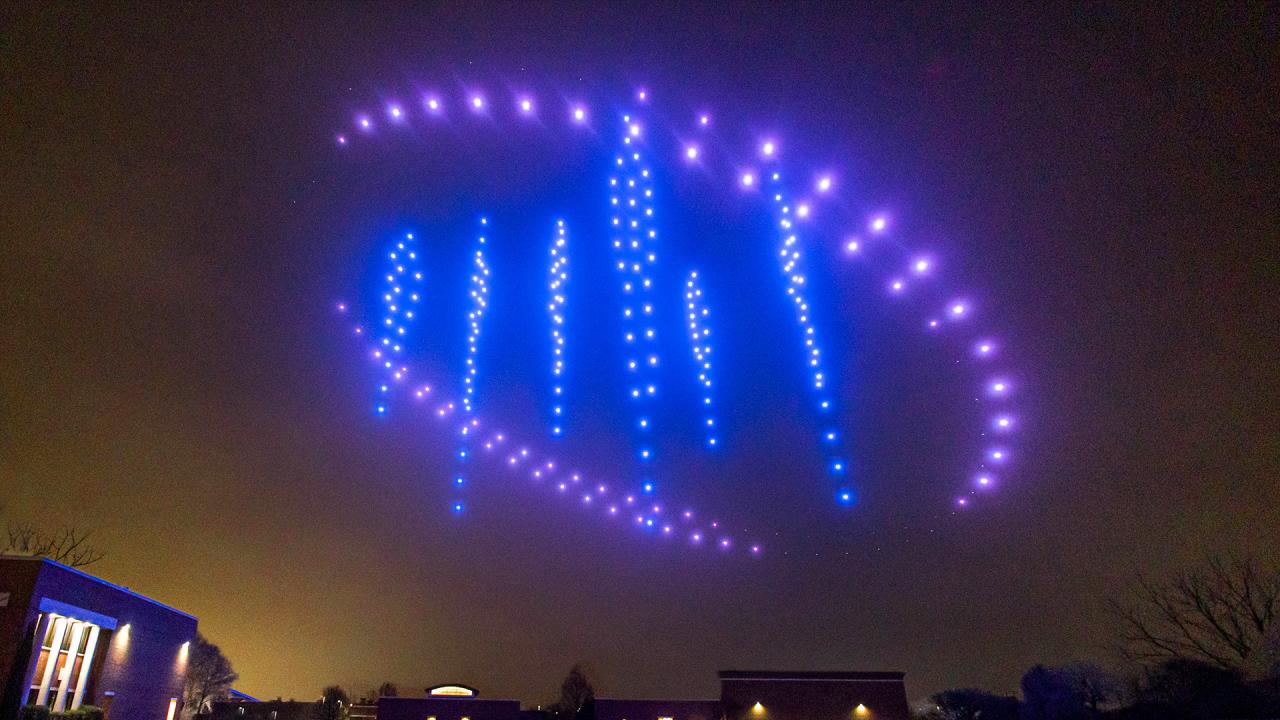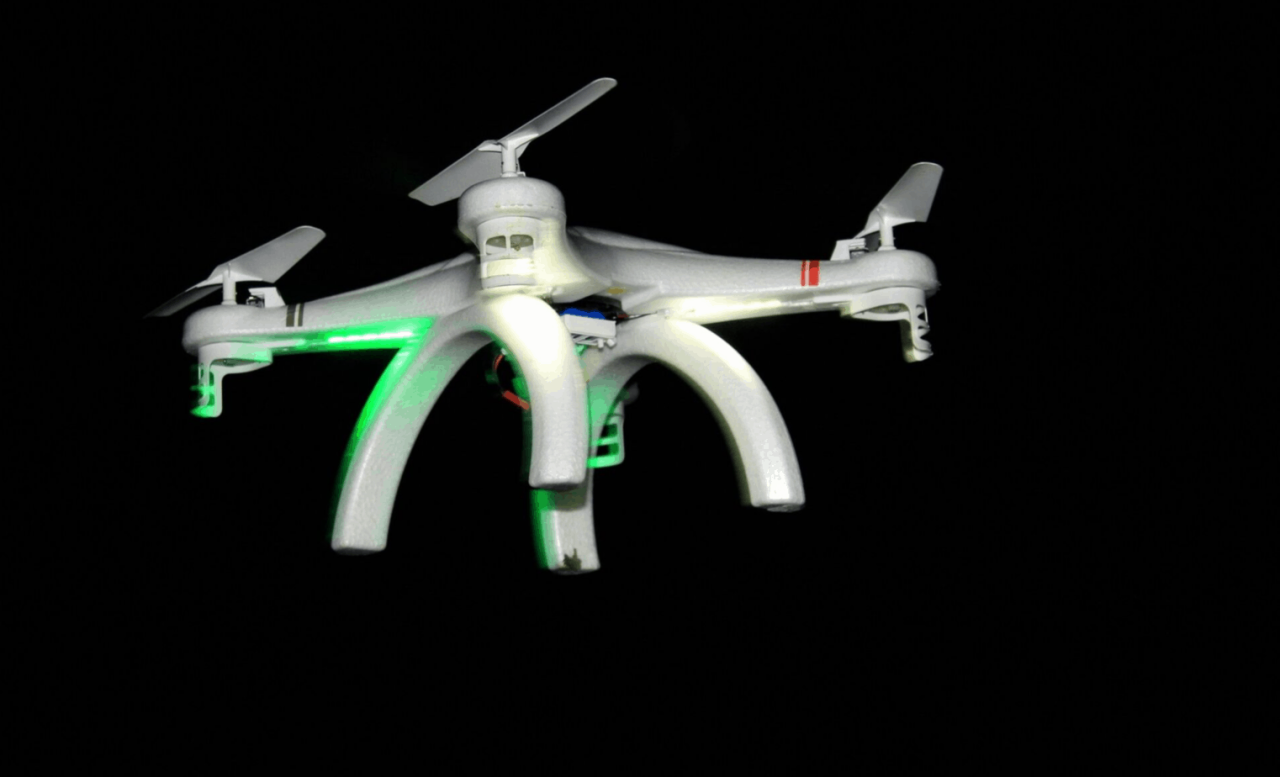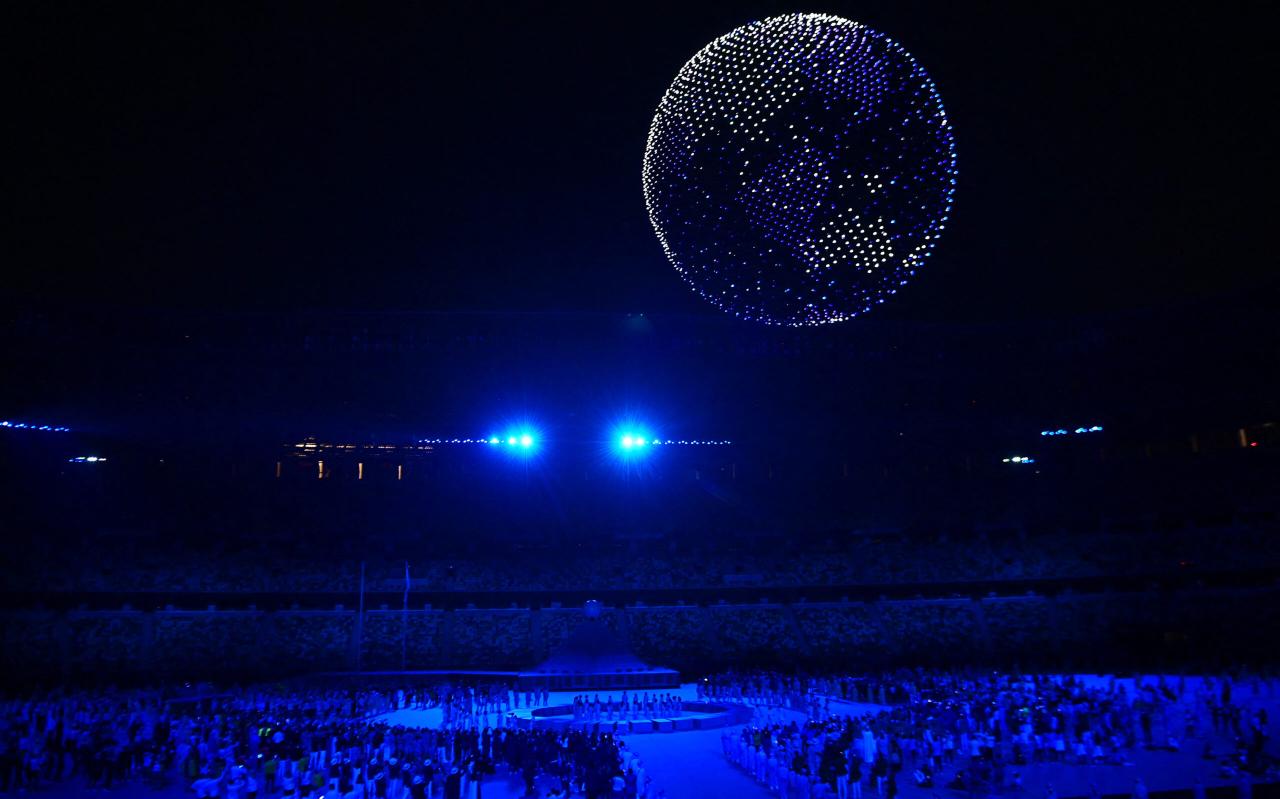How do drone shows work? It’s a question that sparks wonder, conjuring images of dazzling light displays choreographed across the night sky. These mesmerizing spectacles aren’t magic; they’re the result of sophisticated technology, meticulous planning, and precise coordination. From the individual drones themselves – their hardware, software, and communication systems – to the complex choreography and safety protocols involved, creating a drone show is a fascinating blend of engineering and artistry.
This guide will unravel the mysteries behind these breathtaking performances, offering a clear and engaging look at the technology and processes that bring them to life.
Drone shows rely on a network of individually controlled drones, each equipped with bright LEDs and GPS. Sophisticated software orchestrates their movements, transforming simple flight paths into intricate patterns and animations. The programming involves precise timing and positioning, ensuring that each drone executes its maneuvers flawlessly, in perfect synchronization with the others. Safety and regulatory compliance are paramount, with careful planning and emergency procedures in place to mitigate potential risks.
Drone Show Technology

Drone shows are captivating spectacles of coordinated light and movement, but the technology behind them is complex and fascinating. This article delves into the hardware, software, choreography, safety, synchronization, and creative design aspects that make these breathtaking displays possible.
Drone Hardware and Software

The magic of a drone show hinges on the precise coordination of numerous drones, each equipped with specific hardware and controlled by sophisticated software. Let’s examine the key components.
Each drone typically includes a flight controller, GPS module, battery, and LED lights. The flight controller acts as the brain, receiving instructions and controlling the drone’s motors. GPS ensures precise positioning, while the battery powers the entire system, and the LEDs create the visual spectacle. Different drone models vary in specifications; a comparison is shown below:
| Model | Weight (grams) | Battery Life (minutes) | Number of LEDs |
|---|---|---|---|
| Model A | 250 | 15 | 64 |
| Model B | 300 | 20 | 128 |
| Model C | 350 | 25 | 256 |
Controlling multiple drones simultaneously requires specialized software. The programming process generally involves these steps:
- Define Drone Parameters: Set individual drone specifications (model, ID, LED configuration).
- Choreography Design: Plan the flight path and lighting sequences for each drone.
- Code Generation: Translate the choreography into code, defining coordinates, timing, and LED control for each drone.
- Simulation and Testing: Simulate the show in software to identify and correct potential issues before deployment.
- Upload and Deployment: Upload the code to the drones and execute the show.
The communication flow during a show is critical. A simplified illustration is as follows:
[Imagine a flowchart here showing the control system sending commands to individual drones via a communication network (e.g., radio frequency), and drones sending feedback (position, status) back to the control system. The control system constantly monitors and adjusts commands based on this feedback.]
Flight Planning and Choreography

Designing a drone show choreography is a meticulous process involving multiple considerations, including the spatial environment, audience perspective, and ensuring flight safety. The key steps are:
- Site Survey: Assess the show location, considering airspace restrictions, obstacles, and audience viewing areas.
- Concept Development: Determine the show’s theme, visual style, and overall narrative.
- 3D Modeling: Create a 3D model of the show area to visualize drone movements and lighting effects.
- Flight Path Planning: Design individual flight paths for each drone, ensuring safe distances and collision avoidance.
- Synchronization: Coordinate drone movements and light displays to create a cohesive visual experience.
- Testing and Refinement: Simulate and test the choreography to identify and address any issues.
Software tools like specialized drone show planning software are crucial for planning flight paths and synchronizing light displays. These tools often include features like 3D visualization, collision avoidance algorithms, and automated code generation. For example, one software might allow for easy import of 3D models of the performance area, while another might offer advanced features for creating complex light patterns and animations.
Here’s a sample flight plan for a simple two-drone show:
- Drone 1 (0:00-0:10): Coordinates (0,0,10) to (10,0,10), Red LED
- Drone 2 (0:00-0:10): Coordinates (0,10,10) to (10,10,10), Blue LED
- Drone 1 (0:10-0:20): Coordinates (10,0,10) to (10,10,10), Green LED
- Drone 2 (0:10-0:20): Coordinates (10,10,10) to (0,0,10), Yellow LED
Safety and Regulations, How do drone shows work
Operating multiple drones in close proximity necessitates stringent safety measures. The following table Artikels key risks and mitigation strategies:
| Risk | Mitigation Strategy |
|---|---|
| Drone Collision | Implement robust collision avoidance algorithms and maintain sufficient separation distances. |
| Battery Failure | Use high-quality batteries, perform regular maintenance, and have backup drones ready. |
| Loss of Signal | Employ redundant communication systems and have emergency landing procedures in place. |
| Malfunction | Regularly inspect and maintain drones, and use fail-safe mechanisms. |
Regulations governing drone shows vary significantly across jurisdictions. For instance, in the United States, the Federal Aviation Administration (FAA) requires permits and adherence to specific airspace restrictions. Similarly, in many European countries, national aviation authorities have established regulations regarding drone operations, often requiring operator certification and adherence to strict safety protocols. Emergency procedures are essential. These might include:
- Emergency Stop Protocol: A system to immediately halt the show in case of an emergency.
- Communication Plan: Clear communication channels between the control team and emergency responders.
- Backup Systems: Redundant systems to take over in case of primary system failure.
- Fail-Safe Mechanisms: Built-in systems to ensure safe landing in case of malfunction.
Synchronization and Communication

Maintaining synchronization during complex maneuvers and light patterns relies on robust communication protocols and precise positioning systems. The drones use various communication methods, such as radio frequency (RF) communication, to receive commands and transmit feedback.
Several methods ensure reliable communication. A comparison is presented below:
| Method | Advantages | Disadvantages |
|---|---|---|
| Radio Frequency (RF) | Wide range, relatively inexpensive | Susceptible to interference, limited bandwidth |
| Wi-Fi | High bandwidth, readily available | Limited range, susceptible to interference |
| Cellular | Long range, good bandwidth | Expensive, reliance on network coverage |
GPS and other sensors, such as IMUs (Inertial Measurement Units), play a crucial role in precise coordination. GPS provides location data, allowing the control system to track each drone’s position and adjust commands accordingly. IMUs measure the drone’s orientation and movement, contributing to precise control even in GPS-denied environments.
Visual Effects and Creative Design
Drone lights can create diverse visual effects using various techniques:
- Pixel Mapping: Assigning individual LEDs to create complex patterns and animations.
- Light Chasing: Creating the illusion of movement by sequentially lighting LEDs.
- Shape Formation: Arranging drones to form static or dynamic shapes.
- Color Transitions: Smoothly changing LED colors to create dynamic visual effects.
Innovative drone show designs are constantly emerging. Examples include shows that depict abstract art, tell stories, or create interactive experiences with the audience. One show might recreate famous paintings, another could tell a narrative using changing formations and colors, while a third might incorporate audience participation through interactive elements.
Drone shows use hundreds of individually programmed drones to create dazzling light displays in the sky. Think of it like a super-coordinated, aerial version of a pixelated screen; the movements are carefully choreographed, similar to the complex plot twists you might find in the squid game 2 ending , except instead of deadly games, it’s breathtaking visuals. Each drone’s position and light color are precisely controlled to build a complete picture, making for an unforgettable spectacle.
Several factors significantly influence a drone show’s visual impact: lighting conditions (ambient light levels can affect the visibility of the drones’ lights), audience distance (closer proximity allows for more detail to be appreciated), and show duration (longer shows can tell more complex stories but risk audience fatigue).
Drone shows use hundreds of drones programmed to fly in precise formations, creating dazzling light displays. It’s amazing how much coordination is involved, unlike the tragic news of a plane crash south korea today , which highlights the complexities of flight control in a very different context. Understanding the technology behind drone shows helps appreciate the precision required for safe and successful aerial operations, whether for entertainment or other purposes.
Conclusive Thoughts: How Do Drone Shows Work
From the intricate technology behind each drone to the meticulous planning and choreography that brings them together, drone shows are a testament to human ingenuity and creativity. Understanding how these spectacular displays come to life reveals a fascinating interplay of engineering, software development, and artistic vision. The next time you witness a drone show, remember the complex coordination, the meticulous planning, and the sheer technological marvel that makes this breathtaking spectacle possible.
It’s more than just lights in the sky; it’s a testament to innovation and artistry.
Detailed FAQs
What happens if a drone malfunctions during a show?
Drone shows use hundreds of individually programmed drones to create amazing light displays. Think of it like a super-coordinated, aerial dance routine! Want to see something equally impressive, but on a different scale? Check out predictions for the squid game season 2 ending , which is likely to be just as captivating, though without the flying robots.
Then, consider how those complex movements in a drone show are all managed by sophisticated software, creating stunning visuals in the night sky.
Most drone show systems have built-in redundancy and fail-safes. If a drone malfunctions, it typically enters a safe mode, either landing automatically or returning to a designated area. The show may continue with the remaining drones, or be paused depending on the severity of the malfunction.
How much does it cost to put on a drone show?
The cost varies greatly depending on the size and complexity of the show, the number of drones used, and the location. Smaller shows can cost tens of thousands of dollars, while large, complex shows can cost hundreds of thousands or even millions.
How long does it take to plan and program a drone show?
Planning and programming a drone show can take weeks or even months, depending on the size and complexity of the show. This includes designing the choreography, programming the flight paths, and testing the system.
What kind of weather conditions are ideal for drone shows?
Calm, clear weather conditions are ideal for drone shows. High winds, rain, or fog can significantly impact the drones’ performance and safety.
